How a Bus is a Metro in Bogotá
May 29th, 2010 by ant6nI previously mentioned that transit has received some creative ideas to implement systems outside of the old paradigms of subway, streetcar and bus. One of these ideas is to run a system of buses as a sort of surface subway, called bus rapid transit, or just BRT. The canonical example is Bogotá’s Transmilenio. It is a relatively young system, barely 10 years old, but it has reshaped transport in the whole city, and its success created a movement to replicate similar services all over the world.
The system basically consists of buses running at high frequency to improve capacity, and actually approaches and surpasses the throughput of some of the world’s metro systems, by using a few essential tools:
How It Works
The entire bus network is run on dedicated lanes, separated from regular traffic. The lanes are usually in the center of a road, often along High Ways to reduce the number of intersections. The stops are built similar to metro stations, with raised platforms and payment of fares at the station entrance. Thus, boarding is level (no steps up or down) and happens through all doors of the single- and double-articulated buses. These features reduce dwell times while increasing capacity.
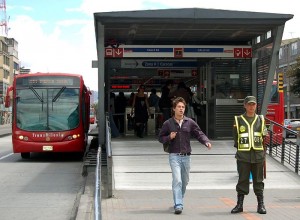 These techniques were actually pioneered in the Brazilian city of Curitiba in the 70s. Although Bogotá was not the first city to build a system like this, I would still consider its system to be the prime example, as it is a much larger metropolis than Curitiba, with more than 8 million inhabitants vs fewer than 2. It also stands out by the speed at which the system was set up, the branding used to differentiate it from previously existing buses, and the conscious choice to built the much more affordable BRT instead of an expensive metro.
These techniques were actually pioneered in the Brazilian city of Curitiba in the 70s. Although Bogotá was not the first city to build a system like this, I would still consider its system to be the prime example, as it is a much larger metropolis than Curitiba, with more than 8 million inhabitants vs fewer than 2. It also stands out by the speed at which the system was set up, the branding used to differentiate it from previously existing buses, and the conscious choice to built the much more affordable BRT instead of an expensive metro.
Back in 2000, another option was to build 30km of metro. Instead it built BRT, which is planned to eventually reach 388km – at only 10% higher cost than the original metro plan would have been.
At the same time the city also measures to force people off the car and into the bus. These include restriction driving during certain times of the day according to the license plate numbers, huge staffed bicycle stations around the Transmilenio stops and weekend closure of highways.
The BRT Wave
It’s interesting to see innovation and integrated transportation planning in the developing world, instead of some attempt to replicate existing systems developed nations. The Transmilenio has become a new mode of transport, distinct from the bus, and people will actually say “I am going to take the Transmilenio” (well, more like “Voy a tomar el Transmilenio), instead of just the bus.
Today, cities all over are building their own BRT. For example, Guangzhou just opened a surprisingly similar system this year, emulating all the techniques of the Transmilenio.
 Even in North America transit agencies are jumping on this BRT wave. Most recently, the MTA intends to create a “surface subway” along Manhattan’s east side, to be used while an actual subway is being constructed. However, for example in Cleveland, these are half-hearted attempts, lacking dedicated lanes, in-station ticketing or level boarding – and, well, speed. It seems that in North America, few planners dare take away lanes from the car. Jarret at Human Transit collected some question to ask about BRT, providing a list of properties of ‘true’ BRT.
Even in North America transit agencies are jumping on this BRT wave. Most recently, the MTA intends to create a “surface subway” along Manhattan’s east side, to be used while an actual subway is being constructed. However, for example in Cleveland, these are half-hearted attempts, lacking dedicated lanes, in-station ticketing or level boarding – and, well, speed. It seems that in North America, few planners dare take away lanes from the car. Jarret at Human Transit collected some question to ask about BRT, providing a list of properties of ‘true’ BRT.
Issues
There are some pitfalls even when implementing actual BRT. Some relate to speed (which is always going to be lower than a subway), most related to costs. One problem is that running a large number of buses is much more feasible in the developing world, where wages are low. At the same time, the cost to run the system is closely related to fuel costs – which will keep rising.
The system also requires more maintenance, both on the upkeep of the right of way (steel rail vs paved road), and the vehicles themselves, which have to replaced much more frequently. This is one of the main reasons why Ottawa is going to replace it’s busway with a light rail that goes through downtown underground. Despite a 2.1$ billion capital investment, the city hopes to save 100$ million annually on operating costs, while increasing capacity.
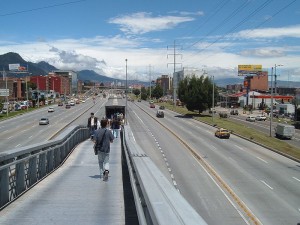 Another issue is the placement of stations along huge highway corridors, often far away from riders’ destinations, forcing them to traverse large distances across polluted concrete deserts. The pollution coming from the buses themselves should not be ignored, either. Moreover, even when stations are in more downtown areas, these large obstructions are often not well integrated into the urban fabric.
Another issue is the placement of stations along huge highway corridors, often far away from riders’ destinations, forcing them to traverse large distances across polluted concrete deserts. The pollution coming from the buses themselves should not be ignored, either. Moreover, even when stations are in more downtown areas, these large obstructions are often not well integrated into the urban fabric.
Maybe in the long term, as labor and diesel costs become unmanageable, the system fills up, and the pollution becomes too much of a burden for this high altitude city, Bogotá will convert to a rail solution. Already it has concrete plans to build its first metro line, whose construction is supposed to start this year, and which is to be opened in 2015. But in the meantime the city seems to have found an effective and affordable solution to it’s transportation problems.
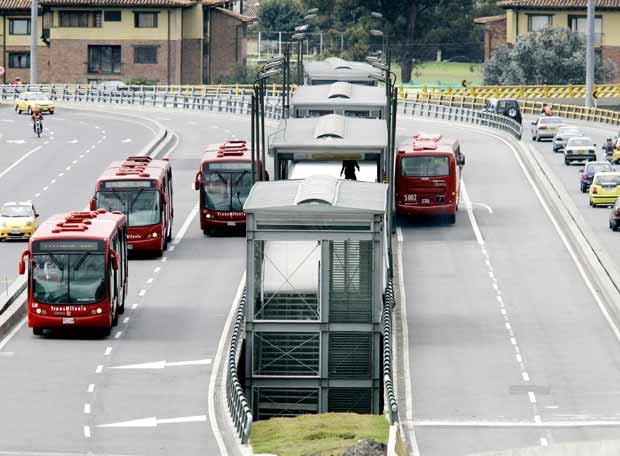
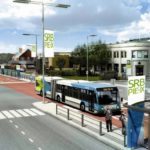
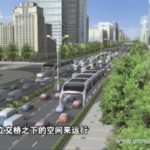
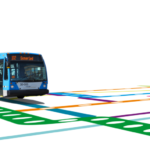
August 11th, 2010 at 20:02
[…] Catbus A blog about transit ideas and implementations « How a Bus is a Metro in Bogotá […]